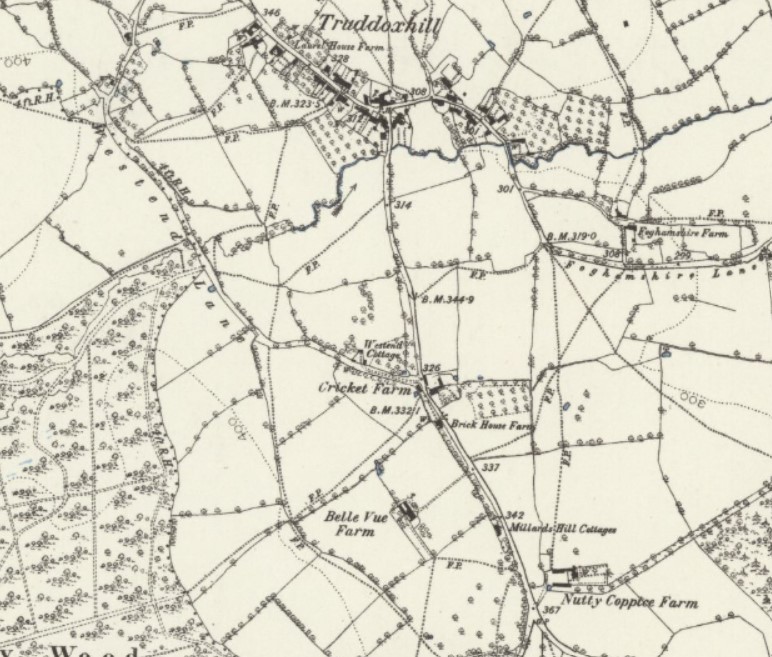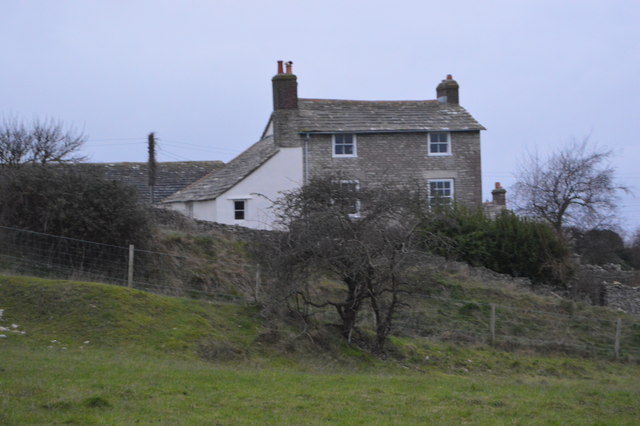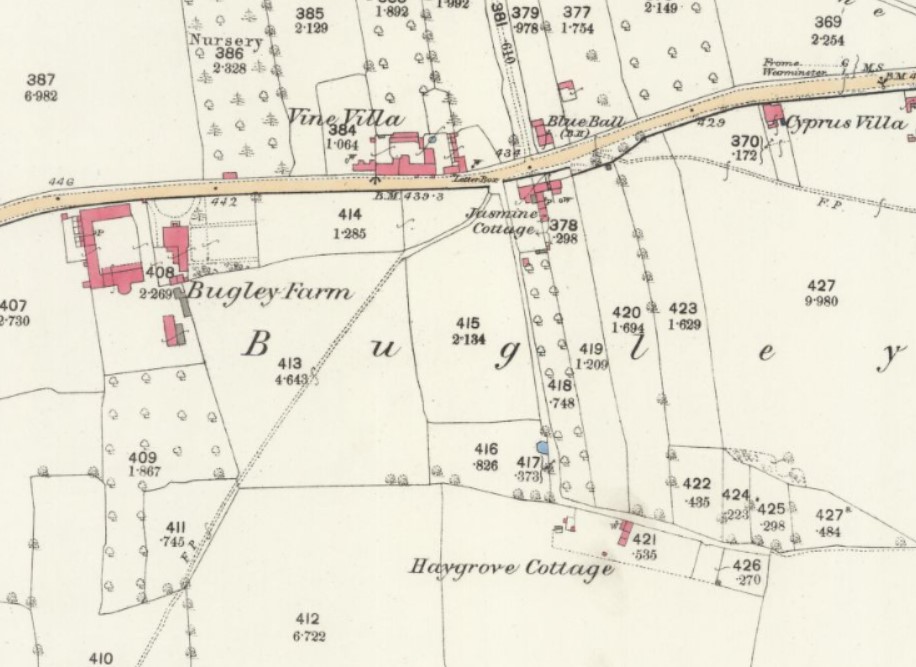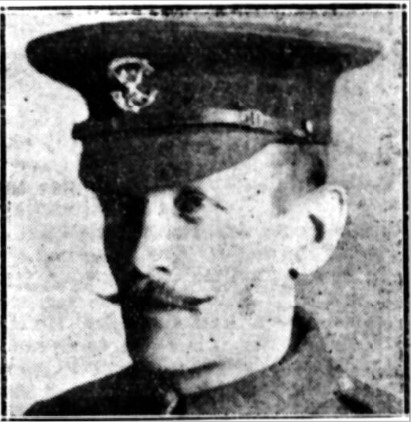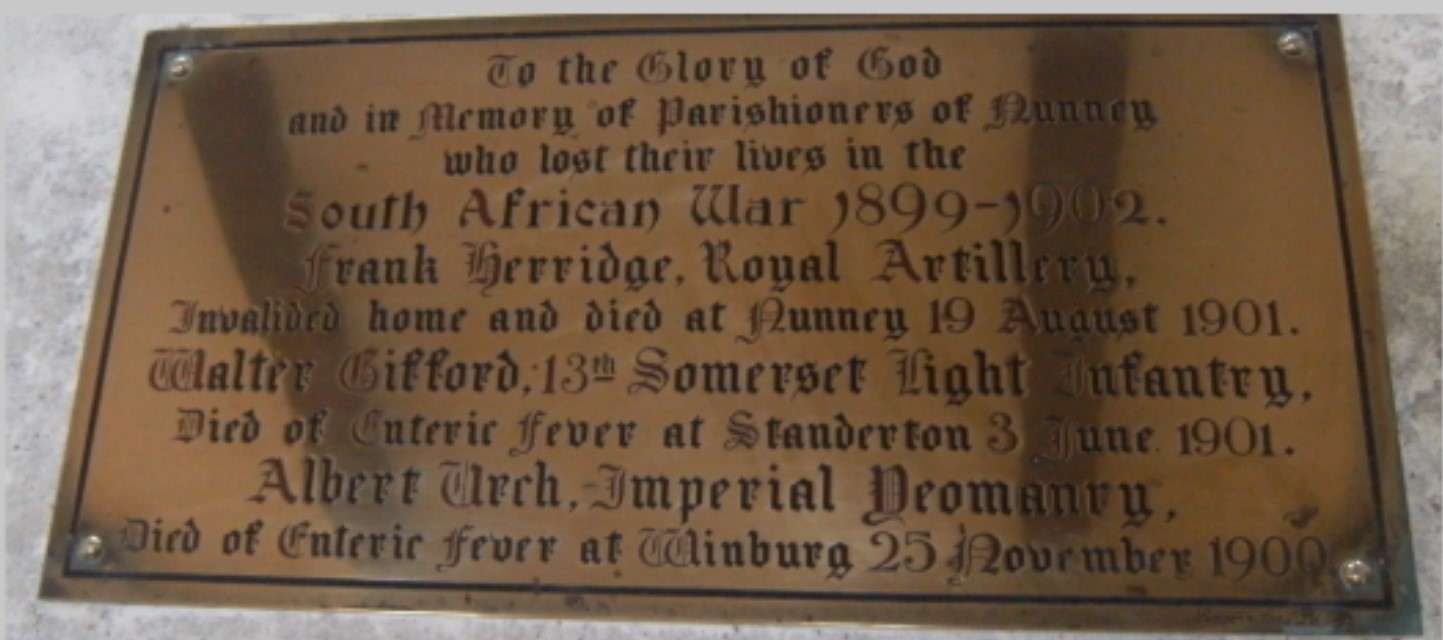Introduction
This article examines the life of Samuel Charles Gifford, a tenant farmer who migrated from the Frome area to South Somerset during the First World War. He was the tenant of White Vine Farm, Hardington, from 1916 to 1922 and then of Park Farm, Haselbury Plucknett, from 1922 to about 1949. His life story includes the deaths of two of his brothers in military campaigns and a savage attack that his sister-in-law endured at the hands of her husband.
Youth
Samuel Charles Gifford was born on 22 February 1886 at Belle Vue Farm, Trudoxhill, near Nunney. His father, George, rented the 65-acre farm from the Marston estate on an annual tenancy. The stone and tile-built farmhouse, set in parkland and encompassed by flower and kitchen gardens, had ten rooms and commanded fine views of the surrounding countryside.[1] George had moved to the farm after marrying Emma Jane Knapton at Sparkford Church on 9 February 1876.
Samuel was the sixth of ten children, two of whom died in fancy. In October 1891, Samuel, aged five, and his sister, Frances Rosina, aged six, began attending Marton Bigot Church of England School. Frances left in December 1891, and Samuel followed in March 1892.[2] It is unclear which school they attended next. In 1893, the school-leaving age was raised from ten to eleven, meaning Samuel probably finished his schooling in 1897.
By April 1901, Samuel was the oldest child still living at home. His oldest brother, William, worked as a milk carrier in London, while his brothers, Percy and Walter, were in the army. His sister, Frances Rosina, was a domestic servant two miles away at Walk Farm, Witham Friary.
In June 1901, the family received the devastating news that Walter had died of enteric fever while serving with the second battalion of the Somerset Light Infantry in South Africa at the young age of nineteen. [3]
In about 1904, Percy returned from the army to work on the family farm, and around three years later, the youngest brother, Reginald, joined the Royal Navy, serving for twelve years.[4]
Inspired by his older siblings, Samuel sought opportunities beyond the family farm. By September 1910, he was a bailiff at Church Farm, Berkley, Somerset, managing a farm for a widow whose husband had passed away the previous year.[5] While living there, he participated in the activities of the Frome and District Club and Institute, located two miles away. On 6 June 1911, the club presented him with a cup and gold medal for achieving the highest score in a six-month skittles tournament.[6]
Marriage
In 1912, Samuel married Sarah Ann Gulliford in the Frome District. Born at Nunney on 14 January 1880, Sarah was six years older than Samuel. They probably knew each other as children because Sarah’s father, Frederick, occupied a 30-acre farm called Cricket Farm at Trudoxhill from the late 1890s until 1895.[7] However, since Samuel was only nine in 1895, it is unlikely that their relationship began then. After leaving Trudoxhill, Sarah moved with her parents to Home Farm, Berkley, then Manor Farm, Penselwood, where they resided in April 1901, and finally to Wayland Farm, Corscombe, where they lived ten years later. Consequently, the circumstances that brought Samuel and Sarah together are a mystery.[8]
Warminster
Samuel and Sarah’s first child, Frederick Charles, was born at Warminster in 1913 but died the following year. When this child was baptised on 13 July 1913, Samuel and Sarah lived at Haygrove Cottage, which lay in the hamlet of Bugley, one mile west of Warminster, and may have been part of Haygrove Farm—a holding of 13.5 acres sold by auction on 19 March 1910.[9]
First World War
Soon after Great Britain declared war on Germany on 4 August 1914, Samuel’s brother, Percy, rejoined his regiment. In early 1916, he was wounded in the hand and spent several months in a hospital on the Isle of Wight. By June, he had recovered enough to return to the front just in time for the Somme Offensive. Tragically, three months into the battle, on 2 October 1916, he was killed.[10]
Meanwhile, Samuel’s youngest brother, Reginald, served in the Royal Navy throughout the war. According to the Somerset Standard, he was on board a ship in Dardanelles when it was sunk, but if this is correct, he must have been rescued as he survived the war and lived until 1972.[11]
A vicious attack
On 14 April 1914, Sarah’s brother, Frederick Richard Gulliford, married Lilian Bullock at Halstock Church. Soon afterwards, they moved to White Vine Farm, Hardington. In March 1915, Frederick violently attacked his wife, jumping on her, knocking her down and breaking her leg in two places. He then denied her medical attention and forced her to work in the house for eleven days, using brooms as crutches. Eventually, he relented and sent for a doctor, who then arranged for Lilian to be taken to Crewkerne Hospital. In August 1915, Yeovil magistrates sentenced Frederick to six months of hard labour, but he absconded before the trial, taking £150 worth of his wife’s possessions with him.[12]
White Vine Farm
Following Frederick’s departure, Samuel took over the tenancy of White Vine Farm. Shortly after his arrival, Samuel’s daughter, Betty Irene, was born at the farm on 25 July 1916.[13]
On 22 April 1915, Sarah’s father died at Wayland’s Farm, Corscombe, leaving an estate valued at £1,161-15s-8d. Except for his furniture and watch, he bequeathed his estate equally to his wife, daughter Sarah, and son Edward Noel.[14] As a result, Sarah inherited several hundred pounds from her father.
Samuel’s sister moves to Hardington
On 10 April 1918, Samuel’s sister, Frances Rosina, married Harold Charles Curtis at Marston Bigot. Harold, a former baker, had enlisted in the Dorset Regiment in February 1916.[15] After being demobilised in July 1919, he and Frances briefly lived at Nunney, where their son Percy was born on 22 December 1919, before moving to Hardington Marsh. Harold and Frances later kept the New Inn in the village.
Haselbury Plucknett
In about 1922, Samuel, his wife and daughter moved to Park Farm, Haselbury. While at Park Farm, Samuel began exhibiting bulls. His first entry was in Palmer’s pedigree bull show and sale held in Yeovil on February 1924, when one of his bulls sold for 24 guineas.[16] He resumed this practice during the Second World War, entering a shorthorn bull in Palmer’s show and sale on 8 February 1940. He continued until January 1946, when his shorthorn bull sold for 74 guineas.[17]
Samuel was a member of the hunting community. On 1 February 1945, he and his brother-in-law, Harold Curtis, attended the funeral of Rev. Edgar Ashley Milne, a former Master of the Cattistock Hunt, at Compton Valence.[18]
Death
Sarah died on 22 August 1949, at the age of 69, leaving an estate valued at £99-6s-5d, which she bequeathed to her daughter, Betty Irene. Sarah appointed her sister-in-law, Frances Rosina Curtis, as her executor.[19]
After Sarah’s death, Samuel retired from farming. He died intestate on 7 December 1972, at the age of 86, leaving an estate valued at £1,556. His last address was The Anchorage, Haselbury.
Children
Samuel and Sarah had two children: Frederick Charles, who died in infancy and Betty Irene, who died unmarried in 2013 at the age of 97.
References
[1] Shepton Mallet Journal, 6 October 1905, p.1. In 1905, the Marston Estate sold the farm to Edward James Rex of Lamyatt (Western Chronicle, 8 December 1905, p.6).
[2] Marston Bigot Church of England School Admission Register.
[3] Somerset Standard, 14 June 1901, p.8. Walter died on 3 June 1901.
[4] Royal Navy Registers of Seamen’s Services, 1848-1939.
[5] Somerset Standard, 16 September 1910, p.3.
[6] Somerset Standard, 9 June 1911, p.5.
[7] Frome Times, 17 September 1879, p.1; Somerset Standard, 17 November 1888, p.3; Somerset Standard, 14 December 1895, p.1.
[8] Their marriage certificate might cast light on the matter.
[9] Western Chronicle, 18 March 1910, p.1.
[10] Somerset Standard, 27 October 1916, p.5.
[11] Somerset Standard, 27 October 1916, p.5. It has not been possible to identify the ship from his service record.
[12] Western Times 6 August 1915 p. 15; Western Gazette 6 August 1915 p. 3.
[13] Birth certificate of Betty Irene Gifford.
[14] The will of Frederick Gulliford, dated 8 October 1914, proved at Blandford on 25 September 1915. The will states, “My elder son Frederick Richard Gulliford has had his share during my lifetime.”
[15] British Army World War I Service records, 1914-1920.
[16] Western Chronicle, 22 February 1924, p.10.
[17] Western Gazette, 19 January 1940, p.1; 8 February 1946, p.3.
[18] Western Gazette, 9 February 1945, p.6.
[19] The will of Sarah Ann Gifford of Haselbury Park Farm, dated 26 September 1928, proved at Bristol on 21 October 1949. Gross value of estate: £99-6s-5d; net value of personal estate: £50-16s-5d. Sarah left her estate to her executors to convert to money and transfer to her daughter absolutely. Sarah’s second executor, a Frome solicitor, predeceased her.
